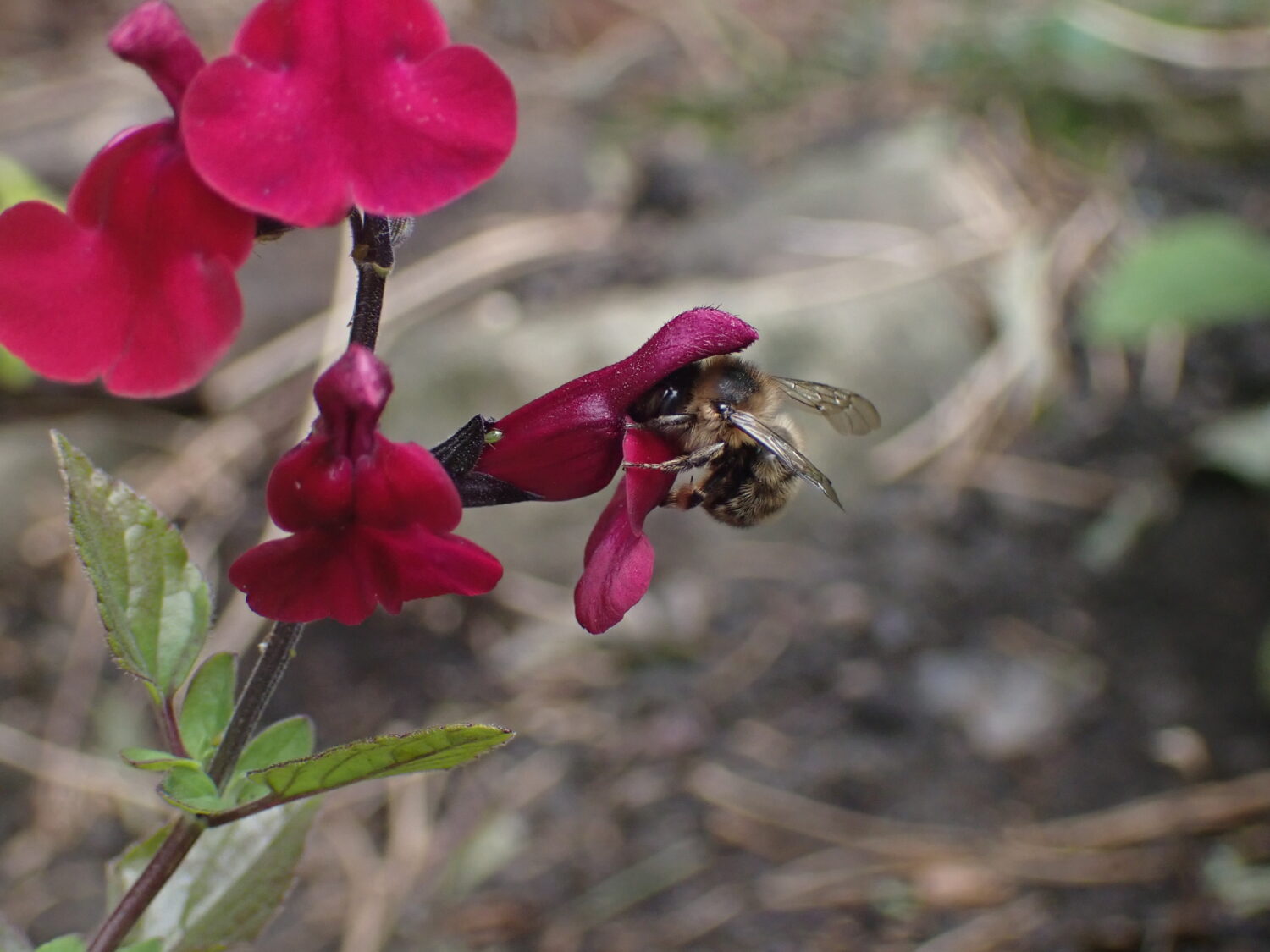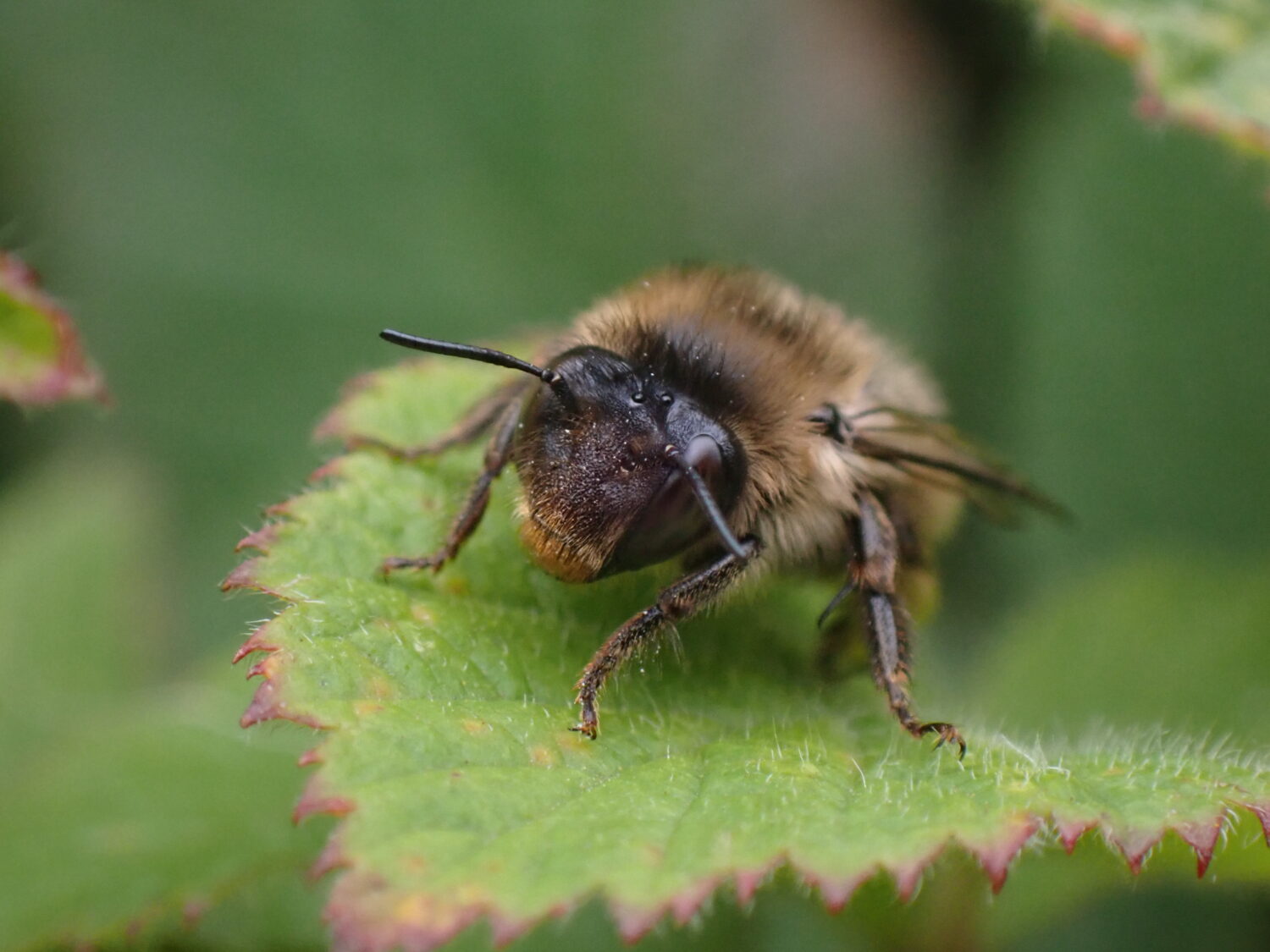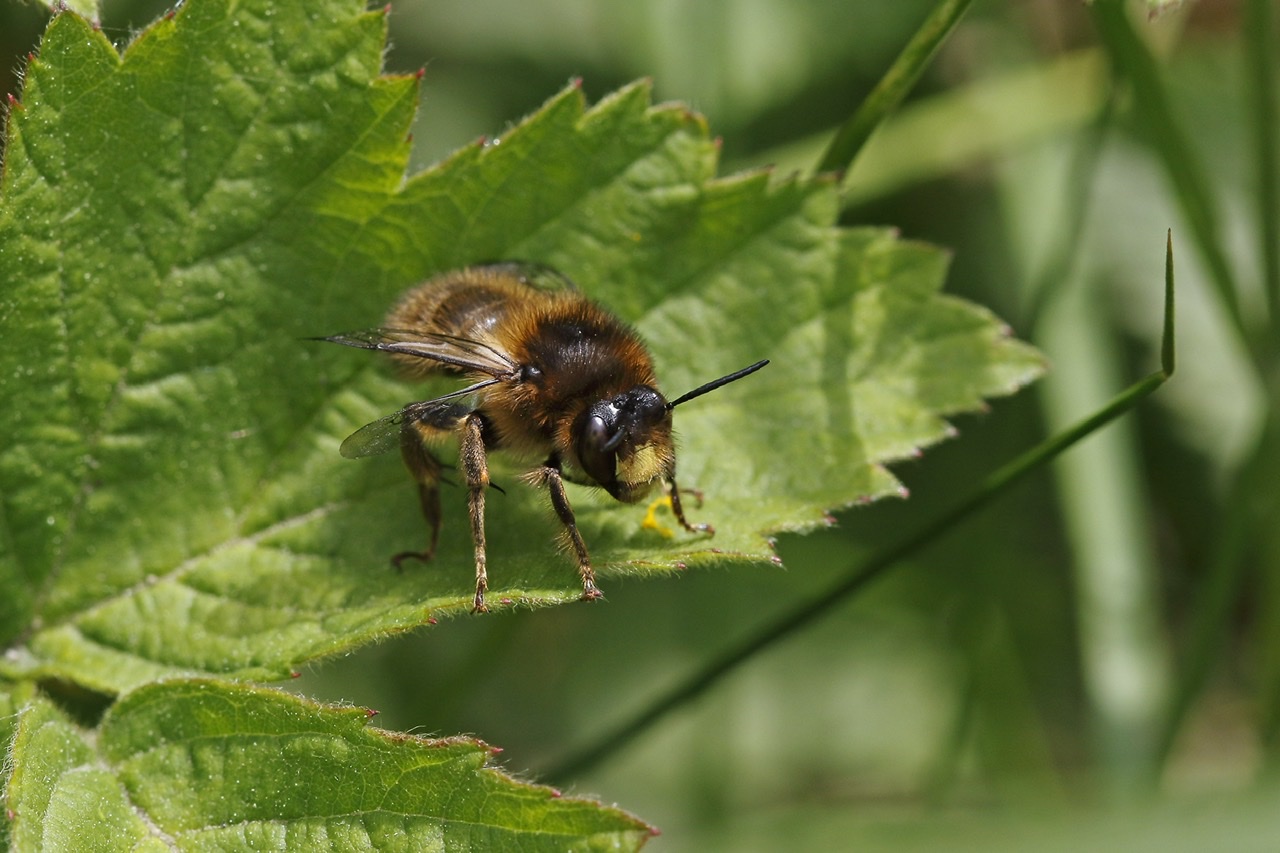Charlotte Rankin introduces the endearing and under-recorded Fork-tailed Flower Bee, a species you could encounter in your gardens throughout summer
Flower bees (Genus Anthophora) are a group of solitary bees that have a characteristic zippy flight with a high-pitched or ‘shrill’ buzz. Five species are found in Britain, two of which can be seen in the North East: the spring-flying Hairy-footed Flower bee (Anthophora plumipes) and the summer-flying Fork-tailed Flower bee (A. furcata). As solitary bees, females single-handedly construct and provision their own nest burrows. Most species of Flower bee nest in the ground or use cliffs and walls, sometimes close together to form large (and noisy!) aggregations.
Their plump and furry nature can result in misidentifying these bees as bumblebees. A handy clue to look out for in the field is the hovering and zippy flight paired with a high-pitched buzz, a behaviour that contrasts with the more bumbling flight of bumblebees. Males of Flower bees can have green eyes and also have a yellow ‘mask’ on their faces, the patterns on which can help to differentiate between species.
Flower bees are long-tongued bees, so you are most likely to spot them on deep, tubular flowers. In spring, patches of Pulmonaria and Primrose are favourites for spring-flying Hairy-footed flower bees while for the summer-flying Fork-tailed Flower bee, various members of the dead-nettle family (Lamiaceae) are firm favourites.
Early in the year, the Hairy-footed Flower bee can be seen on the wing in North Northumberland. It is the feathery hairs of the male’s middle legs that gives rise to the species’ name, with ‘plumipes’ meaning feathered foot. This spring, the North East Bee Hunt received a number of records of this species which have added to our knowledge of its distribution in the region. More information about this spring-flying bee can be found in a short blog post.
Its summer-flying cousin, the Fork-tailed Flower bee, can be found on the wing from late May. While the Hairy-footed Flower bee favours nesting in old cob walls and soft mortar, females of the Fork-tailed Flower bee nest in dead wood and use compacted wood dust to line their nests.

This bee is strongly associated with plants from the dead-nettle family including Hedge Woundwort and White Dead-nettle. A garden visitor, Fork-tailed Flower bees can also be found on garden plants such as Salvias and Lamb’s-ear. It is believed that pollen is collected exclusively from plants of the dead-nettle family. Males can be observed to patrol an area in search for a mate, with a pit-stop at flower patches for nectar and in hope of finding a foraging female.

Attuning your eyes and ears to the flight behaviour and sound of Flower bees is a good first step. Both sexes of Fork-tailed Flower bees have a brown coat, the females of which is darker when freshly emerged. There are two key features to look out for: females have an orange tip to their abdomen while the males have a yellow ‘mask’ on their faces. This yellow ‘mask’ is very visible given the lack of hair on the male’s face.
The brown-furred nature of Fork-tailed Flower bees means that they can be easily confused with the gingery Common Carder bumblebee. Remember to look out for the difference in behaviour and key features. In addition, Common Carders do not have the densely-furred hind legs like that of female Fork-tailed Flower bees.
This bee is on the wing until August so do keep a lookout for them around their foraging favourites. The North East Bee Hunt encourages the submission of all bee sightings. If you have spotted a Fork-tailed flower bee, please do submit your record and help build a better understanding of their distribution in the region.
Discover more
The Fork-tailed Flower Bee is one of the North East Bee Hunt’s target species. You can learn more about its identification and ecology by visiting its species profile here.

Take part in the North East Bee Hunt
Urban or rural, beginner or expert, we need your help to record eight distinctive bees across the North East this spring and summer.
Your records can add to our understanding of bees in the region and inform conservation and monitoring efforts.
Taking part is easy and every record counts, wherever you live in the region. Records of all bee species are encouraged.

